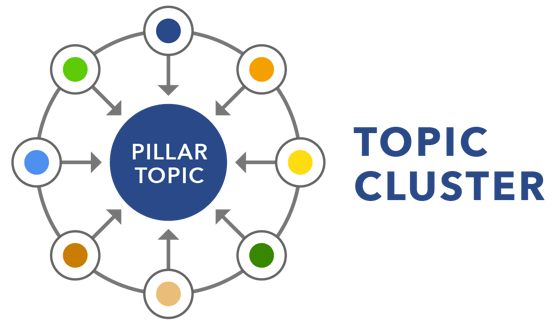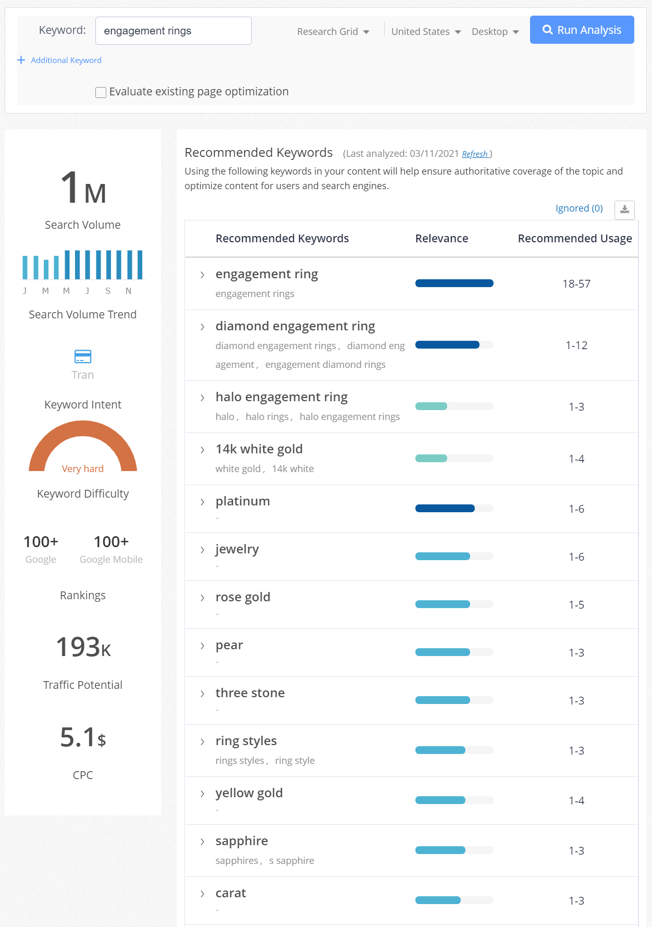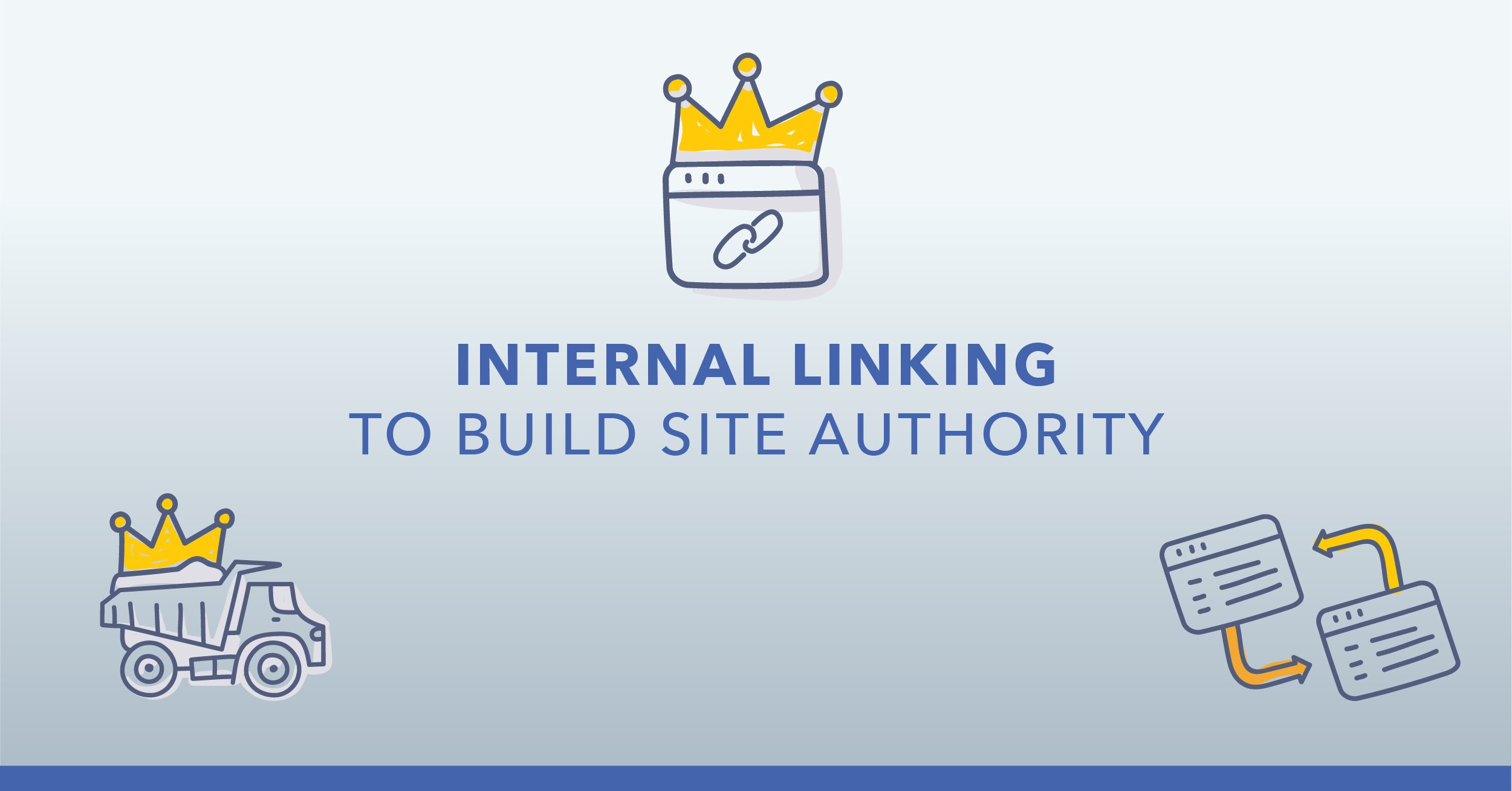Creating high-ranking content is essential for driving organic traffic and building authority in your niche.
But SEO writing isn’t just about adding a few keywords—it’s about taking a thoughtful, strategic approach that meets both search engine requirements and user needs.
The following SEO content writing tips will empower you to create impactful, relevant content that boosts visibility on the SERP and fosters trust with your audience.
Table of Contents:
- Why SEO Content Is Important
- Different Types of SEO Content
-
Essential SEO Content Writing Tips and Techniques By Category
- Challenges When Creating SEO Content
What Is SEO Content Writing?
SEO content writing is the practice of creating content that is both valuable to readers and optimized for search engines.
It involves strategically incorporating keywords and phrases that potential customers are searching for into relevant, engaging, and informative content. As such, SEO writers must consider who is searching for this information and why, and leverage that in the writing process.
This practice not only improves a website's visibility in search engines but also enhances the user experience by ensuring the content is clear, useful, and aligned with user intent.
Why SEO Content Is Important
SEO content is the backbone of a website's online visibility and success. It ensures that your pages are optimized to appear in search engine results, making it easier for your target audience to find you when they’re searching for relevant products, services, or information.
High-quality search engine optimized content aligns with the needs and intent of users while meeting search engine requirements, helping to drive organic traffic and establish authority in your niche.
By addressing user queries with valuable, well-structured content, you not only improve rankings but also enhance user experience, build trust, and encourage conversions. Without strong content, even the most visually appealing website can struggle to attract meaningful traffic, leaving untapped potential on the table.
Different Types of SEO Content
When it comes to SEO, not all content is created equal. Different types of content serve unique purposes, from driving organic traffic to boosting conversions or building authority.
Understanding the various types of SEO content can help you craft a well-rounded strategy that meets your goals while delivering value to your audience. Let’s explore some of the most effective types of SEO content and how they contribute to your overall success:
- Blog Posts: Informative and engaging articles designed to answer user questions, drive organic traffic, and establish authority on a topic.
- Landing Pages: Optimized pages targeting specific keywords or campaigns to convert visitors into leads or customers.
- Product Pages: Essential for e-commerce, these pages showcase products while integrating keywords for better visibility.
- How-To Guides: Step-by-step content that solves user problems and often ranks well for "how to" queries.
- Infographics: Visual content paired with optimized text to drive backlinks and enhance shareability.
- Videos: Engaging multimedia content that improves dwell time and can rank well in video search results.
- Listicles: Easy-to-skim, numbered lists that attract clicks and engagement.
How to Write SEO Content: 19 SEO Content Writing Tips
The tips listed below have been categorized into four categories: research, authority, optimization, and analysis.
Think of this list as the “must-dos” to provide value to your users and demonstrate your authority. In other words, it's your guide to outranking and standing out amongst other content on the SERP.
Here's an overview:
Conduct Thorough Research:
Build Topic Authority:
Optimize the Content:
Analyze, Track, & Report:
Conduct Thorough Research
Begin your content creation journey with in-depth research to identify the keywords and topics that will resonate most with your target audience and align with their search intent.
#1. Identify a Target Keyword / Topic
The first tip to create search engine-optimized content is to conduct proper keyword research. This involves identifying the keywords and topics that are most relevant to your audience and have the potential to drive organic traffic to your site.
Here are some quick tips on how to do this:
- Use keyword research tools or an SEO platform to discover relevant keywords with high search volume and manageable competition.
- Often, it's beneficial to focus on long-tail keywords, which are more specific and less competitive, potentially leading to higher conversion rates by attracting users with clear intent.
- Analyze competitors' keywords to find gaps and opportunities where you can provide unique value.
- Prioritize keywords that align with your business goals, ensuring they are relevant to your products or services.
#2. Research Your Target Audience
Before creating content, it is essential for writers to have a deep understanding of their audience.
Your content should always connect with your target audience by addressing their concerns, passions, and interests.
Demonstrating that you understand what your audience wants is crucial to capturing their attention and ensuring they engage with your content. If your content fails to resonate with them, they are unlikely to invest time in reading it.
Here are a few steps you can take to develop a strong understanding of your target audience:
- Analyze Website Analytics: Use SEO tools like Google Analytics to identify audience demographics, behaviors, and popular content.
- Review Search Data: Explore tools like Google Search Console or keyword research platforms to see what queries bring users to your site.
- Create Audience Personas: Develop detailed profiles based on age, interests, challenges, and preferences to guide your content strategy.
- Engage on Social Media: Monitor comments, questions, and discussions in your niche to understand your audience’s interests and pain points.
- Conduct Surveys or Interviews: Ask your audience directly about their needs, challenges, and what they’re looking for in content.
- Study Competitors: Analyze competitor content and the audience engagement it generates to identify gaps and opportunities.
- Leverage Industry Forums and Communities: Observe conversations in forums like Reddit, Quora, or niche communities to uncover common topics and concerns.
#3. Review Top Ranked Content on the SERP
Use the skyscraper technique to analyze top-ranked content for your target topic, identifying gaps and opportunities to enhance your own work.
This method is not about copying, but about ensuring your content covers the topic comprehensively and from unique angles. Aim to improve upon existing content by offering fresh insights or more up-to-date statistics.
By creating content that exceeds what's already ranking, you'll establish authority and increase your chances of earning valuable backlinks.
Recommended Reading: SEO Content Writing Guide to Creating Authoritative Content
#4. Build Credibility
Enhance your content by incorporating statistics, research, and credible quotes to support your ideas and demonstrate that you have thoroughly researched the topic.
These elements establish that your content is fact-based and authoritative, providing readers with a compelling reason to engage with it. By proving its value, you encourage readers to trust your work and invest their time in it.
#5. Review Your Existing Content
Familiarize yourself with your existing content to avoid unnecessarily creating new blog posts on topics you've already covered, which can lead to keyword cannibalization.
Keyword cannibalization occurs when multiple pieces of content are optimized for the same keyword, confusing both Google and users while hurting your rankings by making you compete against yourself on the SERP.
Since Google typically includes only two listings from the same site for any query, it's more effective to build upon and update existing content. This approach strengthens your content, saves time, and prevents keyword cannibalization.
Build Topic Authority
Now that you've done your initial research, it's time to take steps to build topic authority.
Doing so establishes your content as a reliable and trustworthy source of information, which helps build credibility with your audience and search engines.
Authoritative content not only attracts more readers but also increases the likelihood of earning backlinks, improving your site's search engine rankings and visibility.
Here are a few effective ways to build topic authority:
- Conduct Deep Research: Dive into credible sources, studies, and industry reports to gain a comprehensive understanding of your topic.
- Create Comprehensive Content: Develop in-depth, well-structured pieces that thoroughly address key aspects of the subject, leaving no questions unanswered.
- Use Data and Examples: Back your content with data, case studies, and real-world examples to demonstrate expertise and reliability.
- Publish Consistently on Related Topics: Build a library of interconnected articles or resources to showcase your breadth and depth of knowledge. This is known as topic clustering.
- Leverage Internal Linking: Connect related articles on your site to create a cohesive content structure and reinforce authority on the subject.
- Update Content Regularly: Keep your information current by revisiting older posts and refreshing them with the latest data or insights.
#6. Target the Right Intent
Google has become adept at interpreting search queries and understanding the user intent behind them, tailoring the SERP to match this intent.
Search intent is generally categorized into four types: informational, transactional, navigational, and local, and the SERP's structure often provides clues about the intent behind a query.
Understanding search intent is crucial for SEO content writing because Google prioritizes delivering results that meet users' needs.
For example, if a query has informational intent but your content is transactional, it will not rank well because it doesn't fulfill the user's informational needs.
Here are some tips on how to target the correct search intent in your content:
- Analyze the SERP for Clues: Search your target keywords and study the results to see what type of content is ranking (e.g., blog posts, product pages, guides). This reveals what users expect for that query.
- Refine Keywords Based on Intent: Use SEO tools or platforms (like seoClarity!) to identify keywords aligned with specific intents and tailor your content accordingly.
- Optimize for Different Content Types: Match your content format to the intent—create blog posts for informational queries, product pages for transactional queries, or comparison guides for commercial intent.
- Monitor User Behavior: Use analytics to track bounce rates, time on page, and conversion metrics. If users aren’t engaging as expected, the content might not match their intent.
- Test and Iterate: Regularly update and test content based on user feedback and performance data to ensure it continues to align with evolving search intent.
#7. Create Strong Topic Clusters
Topic clustering involves creating a series of related articles or pages centered around a core topic and then internally linking them together to enhance search engine visibility and improve user experience.
While a single page can address several aspects of a topic, having diverse content centered around that topic strengthens your overall authority.
Content marketers should aim to explore a topic from various perspectives, as this approach not only enriches the content but also signals to search engines that your site is a valuable resource on the subject.
 (Cover a subject from multiple angles to demonstrate your authority on the topic.)
(Cover a subject from multiple angles to demonstrate your authority on the topic.)
#8. Determine the Appropriate Content Type to Create
Ensure you choose the right type of content to effectively convey your message, taking into account both search intent and the nature of your content.
While a blog post is ideal for sharing information, a product page is better for showcasing items that users can purchase.
Additionally, although written content is often effective, consider also using video content to engage and attract users in a dynamic way.
#9. Focus on Semantically Related Keywords
Keyword stuffing is an outdated practice and doesn't help users gain meaningful insights.
Instead, enhance your content by including semantically related keywords that support your main topic.
For instance, if you're writing about engagement rings, incorporate terms like diamonds, heart-cut, and carats, which naturally relate to your subject.
This approach not only enriches your content but also establishes your authority by introducing new concepts and ideas that might surprise your readers.
#10. Consider What Makes Your Content Link-Worthy
Exceptional content won’t only give your readers a good user experience, it will also cause other websites to link to your site as a reference. Receiving backlinks is a huge indicator of a website’s authority and a ranking factor for the Google SERP.
Consider content ideas that attract links naturally. This may include original research, unique infographics, proprietary or owned concepts, or a unique approach that your company created to address your target audience's pains or needs.
#11. Write in an Active, Actionable Voice
How you write is just as crucial as what you write. Using an active voice, rather than a passive one, strengthens your writing and showcases your authority on the topic.
To write in an active voice, follow these tips:
- Identify the Subject: Ensure the subject of your sentence is performing the action, rather than receiving it. For example, write “The team completed the project” instead of “The project was completed by the team.”
- Focus on Strong Verbs: Use clear, action-oriented verbs to describe what the subject is doing. Replace weak verbs and avoid overusing forms of “to be” (is, are, was, were).
- Eliminate Unnecessary Words: Simplify sentences by removing extra words that can lead to passive voice. For instance, “The report was written by Sarah” becomes “Sarah wrote the report.”
- Check for "By" Phrases: Look for phrases with “by” followed by the doer of the action, a common indicator of passive voice. Rework these sentences to make the subject come first.
Bonus: AI-Driven Content Insights
Creating well-optimized content for each project can be challenging when time and resources are limited, especially with other priorities on your plate. That's why seoClarity developed Content Fusion for AI-powered content creation and optimization.
Content Fusion enables you to create authoritative content at scale, boosting your copy's authority faster than ever. It uses a deep-learning algorithm to provide a list of essential topics to include in your copy for optimal keyword performance (we operate the world's largest competitive data set so it’s likely that we have keywords that relate to your industry.)
Here is part of the must-use topics for our example of “engagement rings”:
 (A portion of the must-use topics for the keyword “engagement rings.”)
(A portion of the must-use topics for the keyword “engagement rings.”)
Notice how Content Fusion alleviates the need to manually search for the correct user intent. Here, it alerts us that this keyword has a transactional user intent, so a product page would be the correct content type to create in this case.
Another extension of our Research Grid, Topic Explorer allows you to create topic clusters while taking into account the semantic match of a keyword.
This expands potential keyword ideas far beyond the standard phrase match of a keyword. Google and other search engines now have a semantic understanding of information, so you need to show users that you have a holistic understanding as well.
Looking for a way to overcome writer's block? Content Fusion has been recently integrated with Sia, our AI-driven SEO assistant.
By clicking Sia's lightning bolt icon, users can effortlessly generate outlines, draft paragraphs, or rewrite existing content. Sia utilizes its extensive knowledge to personalize each task based on the topic and individual preferences.

Additionally, the new "Content Profiles" feature allows users to specify the audience, tone, language, and content type for each piece of content. Sia ensures adherence to these specifications, providing tailored and optimized content.
Remember that Sia's outputs are only suggestions to serve as a starting point. They should always be reviewed and edited by a member of your content team.
Tired of creating content that doesn’t rank? Request a customized demo to strategize how our platform can bring success to your SEO content writing.
How to Optimize SEO Content
After you’ve completed your research and have created your copy, there are a few extra steps you can take to really enhance the performance of your content.
Think of these steps as the icing on the cake. They'll serve as that extra push to outperform current ranked content and give readers a seamless user experience.
Recommended Reading: 14 Quick SEO Tweaks That Help Increase Search Visibility.
#12. Craft Compelling Meta Data
The presentation of your content on the SERP has a large impact on its click-through rate.
As such, it's important to create compelling meta descriptions (think of them as mini ad space) and title tags.
That being said, you should avoid clickbait. Make sure your headlines align with what the content is actually about to avoid deceiving readers and increasing bounce rates.
For more information on both the meta description and the meta title, refer to these blog posts:
- How to Write the Perfect Meta Description for SEO
- How to Improve Search Visibility with a Title Tag Test
#13. Leave the Reader with Something Extra
When you give the searcher the information they were looking for, you’ve done your job! To exceed expectations, leave the reader with something extra.
Here are some options to consider:
- Add multimedia elements or quotes from your executives to demonstrate thought leadership.
- Summarize the page’s contents into a TL;DR section (too long; didn’t read) that the user can easily skim and understand.
- Include downloadable templates or quick-hit checklists
When you provide these additional elements, you entice the reader to come back to your site again in the future or visit another page on your site.
#14. Structure Your Content Appropriately
The layout of your content significantly impacts the user experience. Use H1, H2, and H3 headings to create a clear flow and structure for your content.
Proper structure is also crucial for optimizing your content for the Answer Box/Featured Snippet. If the current Answer Box is a numbered list, format your content similarly with numbered entries to make it easy for Google to extract.
If it's a quick definition, ensure your content includes a precise, succinct definition of the concept so it can be easily featured.
#15. Include the Keyword in the Title, URL, and Content
To make it obvious to the reader that your content can solve their problem, use the keyword or its variation in the title. The same applies for the URL — many users will look at it to discern the topic of the page.
Of course, the keyword also needs to be naturally included in the bulk of the content itself. And don’t forget those semantically related topics!
#16. Describe Images in the IMG Alt Tag
Describing images in the alt tag helps users with visual impairments fully engage with your content, especially when using screen readers.
Ensure each alt tag ends with a period, as this prompts the screen reader to pause briefly, creating a more natural reading experience.
#17. Ask the Reader for a Next Step
What action do you want your readers to take after engaging with your content?
Ideally, you want them to convert, whether by making a purchase, signing up for an email newsletter, or downloading an ebook.
Use action-oriented, persuasive language to prompt readers to convert somewhere on your page. If your content is relevant, optimized, and follows the tips mentioned so far, the likelihood of conversion is high.
How to Analyze, Track, and Report on SEO Content
Lastly, you'll want to take steps to evaluate your content's performance with detailed analysis, using insights to refine your strategy and continuously improve your SEO efforts.
#18. Identify Your Key Metrics
Every organization has different metrics and key performance indicators (KPIs) for evaluating content, such as bounce rate, time on page, or overall traffic.
It's essential to track the metrics that are most important and relevant to your goals.
If you're unsure of what your KPIs should be, start by asking yourself, "What is the purpose of this content?" Once you identify your KPIs, you can monitor your SEO efforts, determine whether your goals are being met, and identify what changes are needed if the results fall short.
#19. Use Google Search Console
Google Search Console (GSC) is a great tool for content marketers and SEOs to leverage. Not only is it free, but it’s also easy to use to help you understand user demand. It includes average rank, impressions, clicks, and more.
For instance, if you notice a decrease in impressions for a certain page, this may signal that the content is approaching content decay and needs a content refresh.
Challenges When Creating SEO Content
With the ever-increasing amount of online content, competition to capture the user’s click has skyrocketed.
Recommended Reading: 8 Tricks to Creating Engaging Content
In addition, search queries have become increasingly complex. Meeting those queries with well-optimized, thought-out content is the only way to attract users to your site.
But human search behavior isn’t the only thing that has evolved — search engines are smart. Look at Google’s RankBrain and BERT updates which allow the search engine to have a semantic understanding of search queries instead of simply the explicit phrase match.
And with the rise of generative AI, search engines are becoming even more intelligent and personalized as they roll out chat-style search such as Google's AI Overviews or Bing's integration with OpenAI.
By following the tips above, you can overcome these challenges and create content that ranks.
Recommended Reading: 4 Ways ChatGPT Impacts Enterprise SEO
Conclusion
With so much content and competition online today, it’s not enough to write content and hope it performs well to rank higher. SEO content writing is at the heart of any organic search strategy, and these tips can push your writing forward to offer the end user the most positive experience possible.
Adopt these 19 tips into your content writing process and you’ll be sure to see an improvement in your search performance for higher visibility in the search results.
Read more on the SEO content writing strategy and process to level up your search engine optimization strategy.
Editor's Note: This post was originally published in September 2019 and has been updated for accuracy and comprehensiveness.



.png?width=140&name=Untitled%20design%20(10).png)



4 Comments
Click here to read/write comments